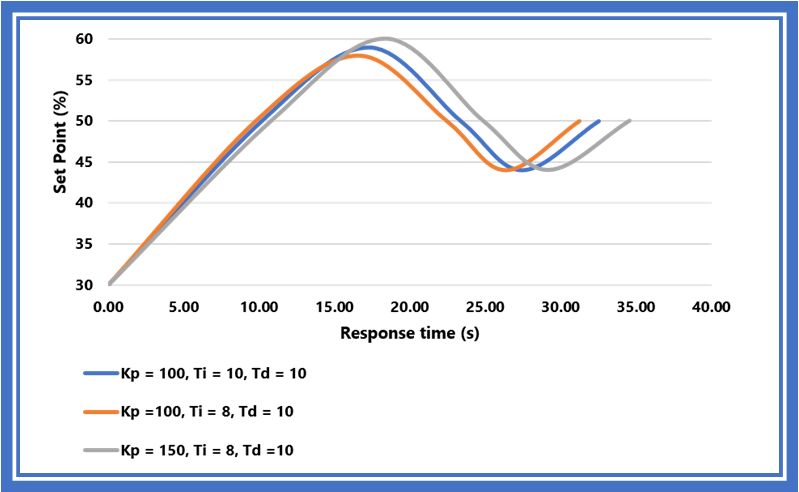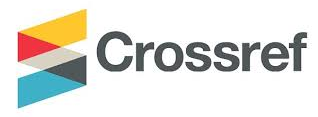Reconditioning and Enhancement of Automatic Pressure Control Equipment for Servo and Regulatory Processes
DOI:
https://doi.org/10.21009/JKEM.10.1.1Keywords:
sensor; actuator; PLC; PID control; processAbstract
Control Systems have taken essential parts widely from industrial world to military equipment. Control systems in the industrial world determine the quality, speed, cost and efficiency of the manufacturing process known as the Process Control System (PCS). The core of the Control System is conditioning (actuators) and reading conditions (sensors). By synergizing those parts with the coordination of the controller, the process value (PV) can be obtained according to the condition of the set point (SP). To get the proper control characteristics, i.e. the fastest possible response, the lowest possible oscillation and offset (error steady state/ESS), an understanding of the concept of a closed loop control system with a continuous scheme is developed. In this regard, the Automatic Control Laboratory under the Pneumatic and Hydraulic Laboratory at the Department of Mechanical Engineering - POLBAN considered to provide students with an introduction to Automatic Instrumentation and Control. The briefing covered the introduction, mechanism and operation of Automatic Instrumentation and Control systems. Therefore, tools were required as a medium for achieving the above competencies, one of which was the modernization of pressure regulators in order to strengthen the Laboratory. Through this research, a rejuvenation and modernization of the control system were carried out by applying a proportional, integral and differential (PID) control system. It was based on a programmable logic controller (PLC) equipped with a human machine interface (HMI) to make it easier to enter set points and PID parameters, to be practical in operation and effective in monitoring and data acquisition. The result of the pressure regulator modernization had the ability to include servo control process (getting a certain value) and regulatory control process (maintaining a certain value) with a continuous closed loop scheme. The modernized pressure control system could be utilized as a prototype demonstration of the system in an actual environment to study and observe the Proportional, Integral and Differential (PID) control system along with the process of determining the parameters Kp, Ti and Td as Practicum equipment.
References
[1] M. Ghasemi, A. Rahimnejad, M. Gil, E. Akbari, and S. A. Gadsden, “A self-competitive mutation strategy for differential evolution algorithms with applications to proportional–integral–derivative controllers and automatic voltage regulator systems,” Decis. Anal. J., vol. 7, p. 100205, 2023, doi: 10.1016/j.dajour.2023.100205.
[2] P. N. Bandung, “Web page, visi misi politeknik negeri bandung,” Web Page. Accessed: May 10, 2022. [Online]. Available: https://www.polban.ac.id/visi-misi/
[3] M. Polver, B. Sonzogni, M. Mazzoleni, F. Previdi, and A. Ferramosca, “Artificial pancreas under a zone model predictive control based on gaussian process models: toward the personalization of the closed loop,” IFAC-PapersOnLine, vol. 56, no. 2, pp. 9642–9647, 2023, doi: 10.1016/j.ifacol.2023.10.271.
[4] P. N. Bandung, "Rencana Strategis Politeknik Negeri Bandung Tahun 2020-2024," Bandung, 2021.
[5] P. N. Bandung, "Rencana Induk Penelitian Politeknik Negeri Bandung 2021-2025," Indonesia, p. 63, 2021.
[6] M. Sekadakis, C. Katrakazas, P. Clement, A. Prueggler, and G. Yannis, “Safety and impact assessment for seamless interactions through human-machine interfaces: indicators and practical considerations,” Transp. Res. Procedia, vol. 72, pp. 2425–2432, 2023, doi: 10.1016/j.trpro.2023.11.740.
[7] T. E. Marlin, "Process control: designing processes and control systems for dynamic performance, illustrate," New York: McGraw-Hill Education, 1995.
[8] D. K. Sahoo, R. K. Sahu, G. T. C. Sekhar, and S. Panda, “A novel modified differential evolution algorithm optimized fuzzy proportional integral derivative controller for load frequency control with thyristor controlled series compensator,” J. Electr. Syst. Inf. Technol., vol. 5, no. 3, pp. 944–963, 2018, doi: 10.1016/j.jesit.2016.12.003.
[9] C. T. Chao and C. C. Teng, “A PD-like self-tuning fuzzy controller without steady-state error,” Fuzzy Sets Syst., vol. 87, no. 2, pp. 141–154, 1997, doi: 10.1016/S0165-0114(96)00022-X.
[10] M. W. Wen, B. Y. Yi, Y. Li, Z. Wei, Z. Qiang, Z. Y. Song, Z. Lin, P. H. Ying, and S. X. Yong, “Effect of home blood pressure telemonitoring plus additional support on blood pressure control: a randomized clinical trial,” Biomed. Environ. Sci., vol. 36, no. 6, pp. 517–526, 2023, doi: 10.3967/bes2023.063.
[11] A. Turan, “PID controller design with a new method based on proportional gain for cruise control system,” J. Radiat. Res. Appl. Sci., vol. 17, no. 1, p. 100810, 2024, doi: 10.1016/j.jrras.2023.100810.
[12] N. A. Anderson, "Instrumentation for process measurement and control, third editon, 3rd, revised ed.," Florida: CRC Press, 1997.
[13] G. Chang and Y. Tu, “Closed-loop control in ultrafast laser milling process using laser triggered plasma,” Int. J. Mach. Tools Manuf., vol. 60, pp. 35–39, 2012, doi: 10.1016/j.ijmachtools.2012.04.002.
[14] P. Groche, F. Hoppe, D. Hesse, and S. Calmano, “Blanking-bending process chain with disturbance feed-forward and closed-loop control,” J. Manuf. Process., vol. 24, pp. 62–70, 2016, doi: 10.1016/j.jmapro.2016.07.005.
[15] G. Y. Tang, S. M. Zhang, and B. L. Zhang, “Optimal tracking control with zero steady-state error for time-delay systems with sinusoidal disturbances,” J. Sound Vib., vol. 299, no. 3, pp. 633–644, 2007, doi: 10.1016/j.jsv.2006.07.020.
[16] B. W. Bequette, "Process Control: modeling, design, and simulation, 1st ed.," New Jersey: Prentice-Hall Proffessional Technical Reference, 2003.
[17] F. V. Souto and J. V. Assem, “Use of feedback loop control theory in software project productivity control: a simulation study,” in IWSM-Mensura, vol. 2725, pp. 1–19, 2020.

Downloads
Published
How to Cite
Issue
Section
License
Copyright (c) 2025 Aris Suryadi, Budi Triyono, Hanni Maksum Ardi, Dibyo Setiawan

This work is licensed under a Creative Commons Attribution 4.0 International License.





















